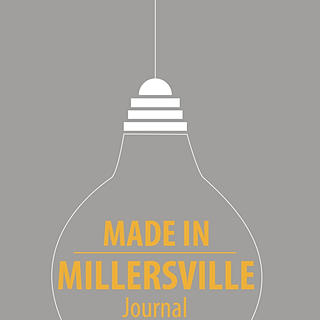CRAFTING CONTENT FOR A GENERAL AUDIENCE
- MiM Journal
- Mar 21, 2024
- 2 min read
General Audience
By Kate Dougherty
The Made in Millersville Journal is geared towards a general audience.
What does that mean?
It means that anyone, from any discipline, can understand the articles we publish. Both the conference and the journal provide a great avenue for students, faculty, and community members to learn about topics in fields other than their own areas of interest. I might not want to take a whole class and study a particular topic, but I would like to understand what you find interesting about it! That is what we aim for in these summary articles. We want you, the authors, to explain to the average person why your topic is interesting, important, or relevant.
Being mindful and intentional about addressing the target audience appropriately is a skill worth developing. A text that the intended audience is able to effectively engage with is the sign of quality writing.
How do you accomplish this?
One of the most important things to do is review your text and ask yourself, “Does the average person know what this term or phrase means?” If not, consider rewording it into simpler language, or provide a definition for necessary jargon. For example, jargon is any language specific to a particular field that is not commonly used in an everyday context amongst the general population.
Look at the big picture. The work you’ve done might be quite complex and detailed, but a general audience doesn’t want or need to understand complicated formulas or experiments. We want a broader perspective about why it matters. What impact does this topic have on the world?
Along with the previous point, provide context. What information might help a reader understand the significance of your topic? Are there historical, cultural, social factors that can help set the stage? For example, if you are writing about a couple art pieces by a specific artist, and the impact they’ve had, it would also be helpful to provide information about the art movement that inspired it, or how the artist came to be a prominent figure, etc.
Include narratives, examples, or images that exemplify your point or help readers to understand and visualize it. Avoid using graphs and charts that require much explanation; they are often more confusing than helpful.
Break up large chunks of text by using headings, lists, and shorter sentences and paragraphs. These help catch the eye, whereas large chunks of text are more likely to be glanced over.
If you follow these tips, you’ll be well on your way to publishing in the Made in Millersville Journal. Feel free to comment below or email us at madeinmujournal@millersville.edu with any questions.

Used by permission of Pexels.






This post was genuinely helpful to read — the explanations are clear, the information is well-organized, and it feels like the writer put real thought into making the topic understandable for a wide audience. Posts like this stand out because they provide practical value instead of just repeating generic points. Adding to the conversation, woocommerce website development has become a reliable option for many businesses that want more control over how their website grows and adapts. Instead of navigating long development queues, working with freelancers gives businesses the flexibility to make quick updates, test new layouts, and refine the user experience based on real data. Developers who work as Framer experts can adjust sections, tweak design components, and improve responsiveness without…
Really enjoyed this post! You nailed it when you said SEO is the backbone of online growth. It’s fascinating how a few well-optimized strategies can decide whether a brand gets noticed or stays buried online. Learning SEO the right way is like learning the language of search engines — and that’s what makes an SEO Course so valuable.
At Skills Matrix, learners explore keyword strategy, on-page optimization, backlinks, and analytics with a practical mindset. The course helps you understand not just what to do, but why it works — building a strong foundation in ethical SEO practices that drive long-term results. For anyone serious about digital visibility, this is a skill worth mastering.
British Airways Istanbul Office – Contact Details & Services
Passengers flying with British Airways can rely on the British Airways Istanbul Office for personalized travel support. From booking affordable tickets and managing itineraries to handling flight cancellations and excess baggage, the Istanbul office covers every aspect of your journey. The staff also assists with travel insurance, lost luggage claims, visa-related queries, and online check-in support. Travelers who need special arrangements, such as medical aid or pet travel, can count on the Istanbul team for reliable assistance. With a commitment to customer care, British Airways ensures a seamless experience for all passengers. Make your travel stress-free by connecting with the Istanbul office for expert guidance.
Another insightful post that delivers real value. Your writing is always clear and informative. For those interested in refined companionship, high class Delhi escorts offer elegance and charm, while beautiful Defence Colony escorts ensure a graceful and comfortable experience.
stunning college girls escort in Delhi
hot party girls escort in Delhi
Exceptionally clear writing and an organized layout make this post stand out. The section focused on Hyderabad VIP party girls introduced a refreshing angle that contributed real value to the broader content.
Also Visit:
Airhostess escorts in Hyderabad
Sexy model escorts in Hyderabad
High Profile Hyderabad Escorts
Hot call girls in Hyderabad